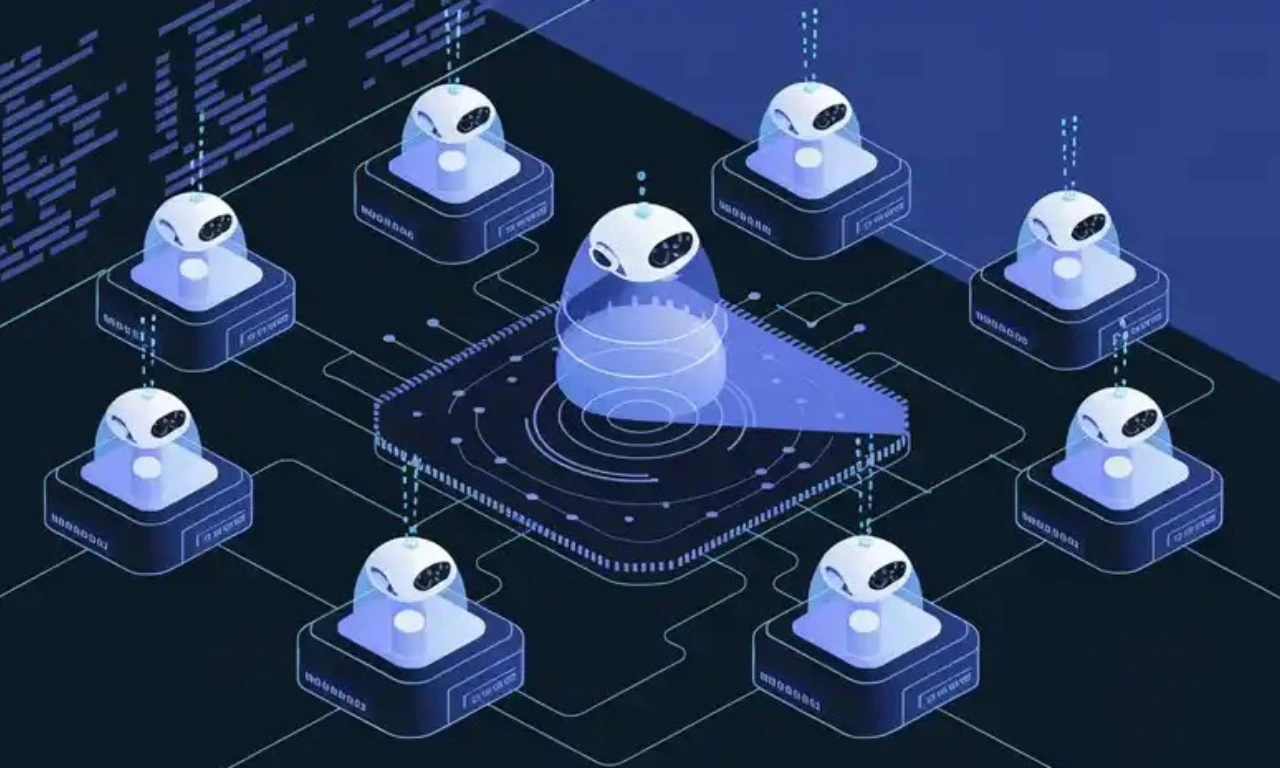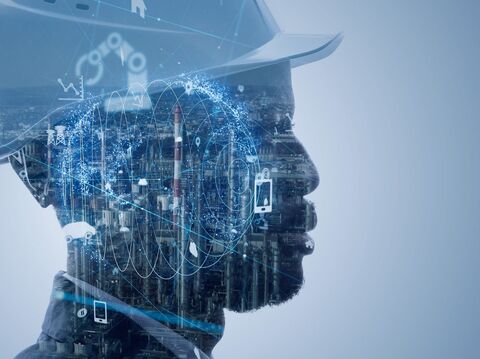Multi-Agent Planning in Artificial Intelligence: How Agentic Systems Work Together for Smarter Decisions

Multi-agent planning in AI is a strategy where multiple independent agents work together to solve complex problems. Instead of relying on a single system, each agent contributes by sharing information, planning, and executing tasks together.
Their coordination algorithms speed up the decision-making process and improve the system’s problem-solving ability. In this way, the outcomes are more efficient and smarter.
This blog helps you understand what multi-agent planning is and how it enhances your business processes.
What is Multi-Agent Planning in AI?
A multi-agent system simply means multiple single agents working together. These systems work using react prompting. This means they turn your LLM into an agent, a system that can reason and complete tasks.
Suppose someone wants to create a multi-agent system for content creation. One agent will research the topic they want for their content, and the other will write the script. A similar happens when Multi-agent planning in AI is implemented in business processes.
In a multi-agent system, each agent works independently. They perceive the environment and make decisions to achieve a common goal. These agents operate as rational agents, consistently selecting actions that help achieve their assigned objectives efficiently. Today, multi-agent systems are everywhere, from self-driving cars to improved healthcare management.
Multi-AI agents’ resilience originates from an adaptive decision-making approach, which results in faster and more innovative solutions.
So, what are they made of? How many types of multi-agent planning are there? How are they beneficial for businesses? Let’s explore.
Components of Multi-Agent Planning Systems
Multi-agent planning allows AI systems to work together like a team through task-sharing frameworks. Here, each agent plays a role in communicating clearly and adapting to changes. This results in a more powerful system that makes smarter decisions in real-world scenarios.
Here are the key components of Multi-agent planning in AI:
1. Agents
Each agent in a multi-agent system can think and act independently. They can take on different tasks based on their strengths, thanks to their sensors and processing abilities.
This division of labour helps solve complex problems more effectively than depending on a single-agent system.
2. Environment
Agents operate in changing environments. But thanks to their ability to sense surroundings and adaptability, they can handle unpredictable and large-scale situations.
Whether the environment shifts due to external factors or internal actions, multi-agent systems stay responsive and relevant.
3. Communication
Communication is the core of multi-agent planning. Agents can share updates or plan actions using multi-agent communication protocols like shared memory.
This keeps the system organised and ensures decisions align when it comes to timing and teamwork.
4. Collaboration
Multi-agent systems can grow easily. It is possible to add new agents to the system without completely redesigning the system.
Plus, because agents work together using cooperative planning, tasks are completed in less time. This means performance will improve even if demands increase.
Why is Multi-Agent Planning Important?
Multi-agent planning allows multiple AI systems or ‘agents’ to work together. This teamwork brings several benefits, such as:
-
Improved Efficiency
When tasks are shared between agents, work gets done faster. Each agent takes on a part of the job, speeding up the decision-making processes.
This is a major pro of agent-based modelling, where the behaviour of individual agents makes the system smarter.
-
Greater Reliability
These systems are more robust because they don’t rely on a single agent to function. If one fails, others can carry on.
This shared approach or collective intelligence in AI allows the system to stay functional even in unpredictable situations.
-
Easy to Scale
Multi-agent systems are decentralised, meaning they are designed to grow. It’s easy to add more agents or parts without causing any integration problems.
There are also coordination algorithms so that new agents can quickly understand their roles and work in sync with others. This makes the whole scaling-up process smoother and hassle-free.
-
Flexibility
These systems are good at adapting to changes. Agents can interact with one another and modify their actions based on what’s happening around them. Smart agents and strong multi-agent collaboration provide quick responses to new challenges or data.
Types of Multi-Agent Planning
In multi-agent planning in AI, agents can work together in different ways to make decisions and achieve shared goals. The design of the system, the required level of control, and the amount of communication between the agents determine the approach to be used.
These are the most common types:
-
Centralised Planning
All the agents in a centralised plan report to the same central system or controller, which makes all the choices. Every agent is instructed by this central unit, which has a complete view of the situation.
Since only one brain is involved, it is easy to coordinate, but if the main unit stops working, this design can cause problems. Due to this dependence on a single source, the system can grow to a limited extent.
-
Decentralised Planning
With decentralised planning[1], each agent works more independently. Agents make their own decisions based on what they know locally and what they can gather from their limited interactions with others. This makes the system more flexible and scalable.
But it also has its share of challenges. Since no one is fully in charge, it's harder to keep things organised and ensure all agents are moving in the same direction.
-
Distributed planning
Distributed planning is integrating centralised planning with the centralised method. Within this framework, agents exchange data and modify their strategies to align with common goals. It balances coordination with independence.
In distributed artificial intelligence, this kind of system is common because it lets agents collaborate well while maintaining some autonomy in their decision-making.
Techniques in Multi-Agent planning
Multi-agent planning in AI involves different systems working together to solve problems. Agents need to apply certain techniques to cooperate effectively. These methods enable task sharing, learning, and communication among agents.
Here are some of the common techniques:
1. Distributed Problem-Solving
Here, the larger complex problem is divided into smaller units for different agents to address. Each agent is given one such task to work on. Then, the outcomes are shared with others to ensure that everything fits together nicely. As a result, agents operating in parallel with one another solve complex issues more effectively.
2. Game Theory
Game theory[2] helps agents make smart choices in situations where they may need to compete or cooperate. In such contexts, agents often behave as utility-based agents, selecting actions that maximize overall system utility or individual outcomes.
It studies how the decision of an agent affects the decision of another and helps in finding the best move. This is useful when agents have different goals or when they need to work as a team to achieve a common objective.
3. Multi-Agent Learning
The agents try to improve their performance over time by learning from experiences and from each other.
Reinforcement learning is often used as one method where agents try out different strategies, learn about the results of their actions, and adjust future behaviours accordingly. Thus, they can adapt to changing situations and objectives.
4. Communication Protocols
Agents must communicate with one another properly to collaborate. Multi-agent communication protocols describe rules regarding message sending, receiving, and interpretation. Such rules ensure an agent will interpret the message in the same way as every other agent. This is, therefore, vital to cooperation during task execution.
Multi-Agent Planning Real-World Case Studies
The use of multi-agent planning in AI is used extensively in the modern world. Here are some of the real-world examples-
-
Smarter Cloud Computing
Imagine if, all of a sudden, thousands of new users log in at once. Typically, such a spike in traffic could cause servers to crash. Thanks to multi-agent planning in AI, this does not happen. Here, intelligent agents keep tabs on server loads.
Upon noticing a sudden rise in demand, the agents channel their efforts into adding more servers, sharing the load, and ensuring smooth functioning. This teamwork exemplifies cooperative planning, where agents assume roles to reach a goal without human intervention.
-
Detecting Errors in Data Transfer
Another real-life instance is error detection during data transfer. As you mail an e-mail or stream a video, little bits of information are transferred over networks. Sometimes, a word might go amiss, or a file could get corrupted.
Error-detecting agents check for mistakes and immediately ask for a resend upon spotting one. Much like spell-check corrects your write-up, these agents deal with digital errors before these errors can create serious trouble.
Architecture of Multi-Agent Planning Systems
In multi-agent planning in AI, the architecture is how everything is organised. It usually includes three core parts: the agents, the environment, and the communication system. Every agent has its own perception, representation, and decision-making abilities.
They might follow the rules or use learning methods to plan what to do next. In rule-based architectures, these decisions often rely on a production system, where condition-action rules guide each agent’s next step.
Communication is essential in the system; agents communicate messages or use shared memory so that they remain in sync and make decisions together without any conflicts.
Multi-Agent Planning Problem
Multi-agent planning is a much more complex matter. It may be difficult to reach a consensus between the different agents about what actions should be taken, who should do them, and a timeframe within which to complete them.
Every agent has conflicting interests and perspectives on one another. The planning must ensure that such conflicts do not arise and that agents cooperate and counteract changes in the environment.
This is so similar to managing a team whose members have to coordinate all their actions.
Future of Multi-Agent Planning
By 2025, multi-agent planning in AI is becoming smarter and more efficient. This kind of autonomous, real-time coordination reflects the direction of agentic AI, where systems are self-directed and capable of intelligent adaptation without constant oversight.
Agent managers now act as real-time coordinators, optimising workflows on the go. Systems can select the best model for each task based on complexity and resources.
Agents are also collaborating more closely, sharing information to build stronger solutions. Businesses are moving from single-model tools to multi-agent systems for critical tasks.
Customisation is also on the rise, allowing companies to tailor agent teams to their specific industry needs.
These advances are making AI more adaptable, reliable, and valuable across a wide range of real-world applications.
Conclusion
Multi-agent planning in AI allows independent systems to work together toward a shared goal, enabling faster, smarter decision-making.
At GrowthJockey, we help businesses integrate multi-agent planning into their workflows using modern tools and expert strategies—not just to improve collaboration, but to scale AI revenue effectively. Whether it’s building task-sharing frameworks or setting up automated negotiation systems, we make your AI systems more adaptive, responsive, and aligned with your business goals.
As a trusted startup incubator, GrowthJockey empowers emerging ventures to leverage multi-agent planning from the ground up, accelerating innovation and market readiness.
Partner with GrowthJockey to unlock the full potential of multi-agent cooperation. Let’s simplify processes and drive better decisions that directly impact your bottom line.
Multi-agent planning in AI FAQs
1. What is multiagent planning in AI?
Multiagent planning in AI involves multiple intelligent agents coordinating and sharing tasks to solve complex problems efficiently through cooperation, communication, and decision-making strategies.
2. What is multi-agent AI?
Multi-agent AI is a system where multiple autonomous agents interact, make decisions, and collaborate to achieve individual or shared goals in a dynamic environment.
3. What is multi-agent path planning?
Multi-agent path planning refers to creating safe, conflict-free paths for multiple agents to reach their goals while avoiding collisions and optimising movement.
4. What are planning agents in AI?
Planning agents in AI are autonomous units that use reasoning and strategies to create action plans, often collaborating with other agents to achieve complex tasks.








